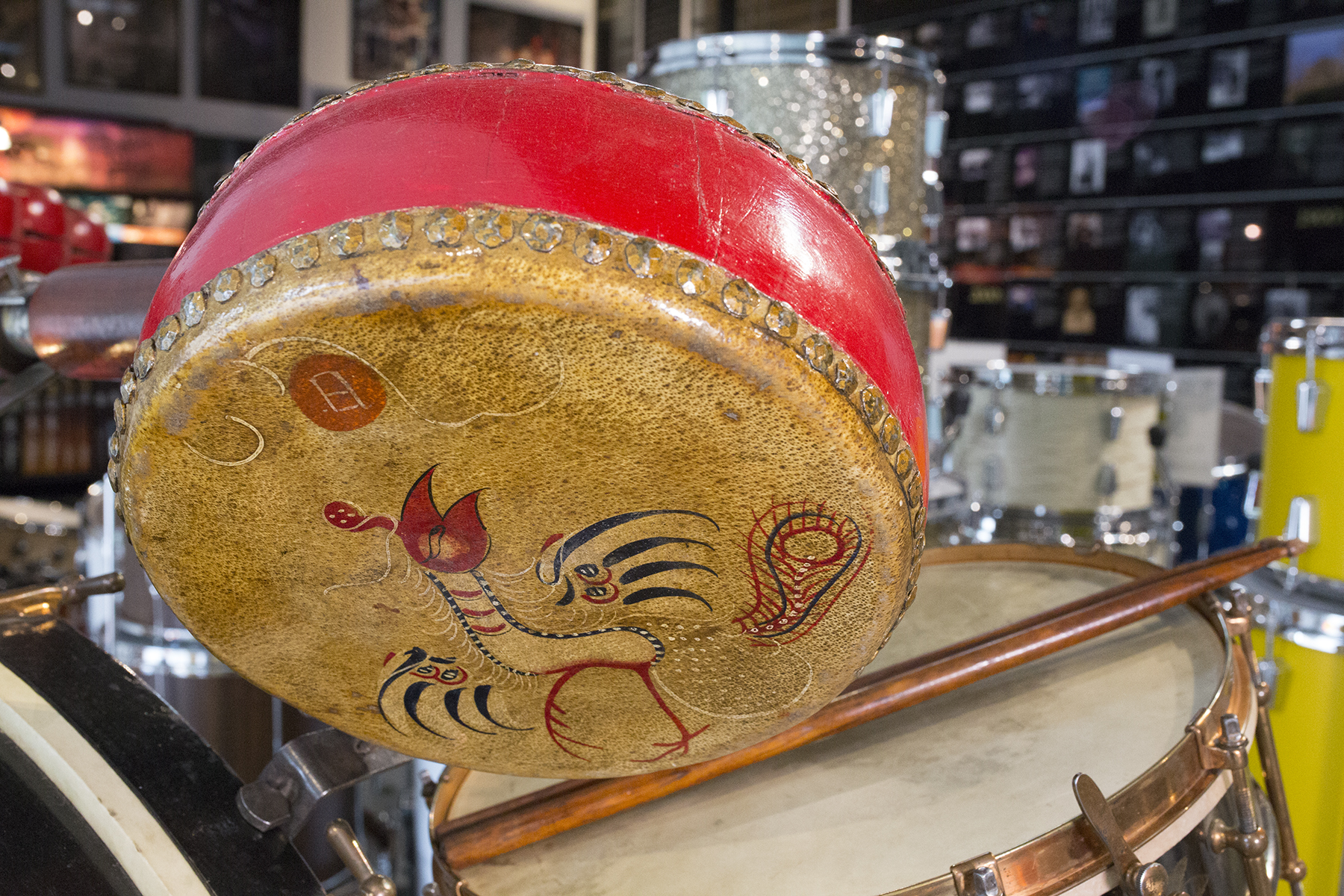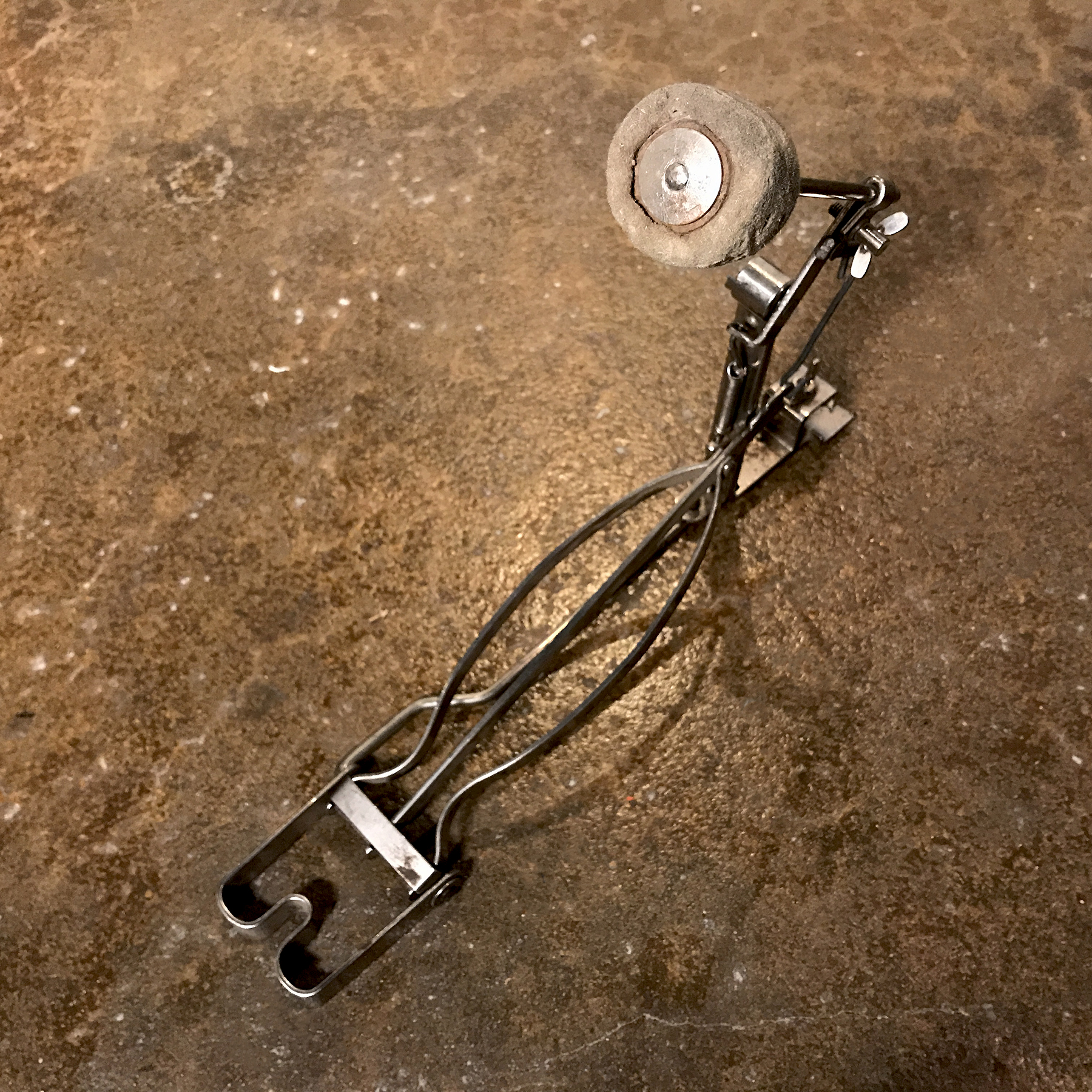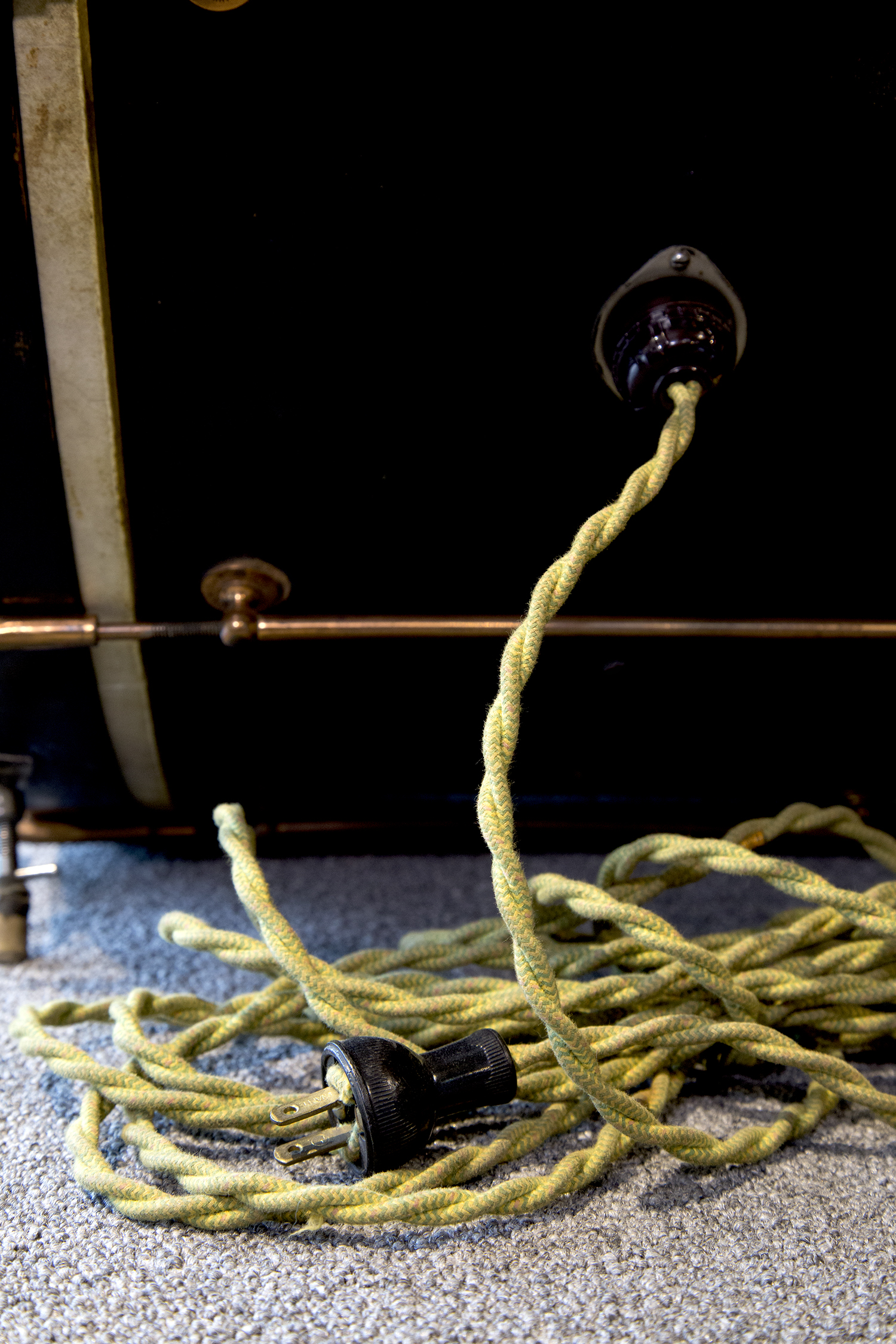Memphis Drum Shop's Jim Pettit unboxes a 90-year-old Ludwig "Broadway" drum set including a 1928 engraved Black Beauty snare drum.
By Bob Campbell
With Craig Grotzky and Jim Pettit
In the world of vintage drums, there are those rare instances where an almost century-old premium drum kit survives the ages intact. Here is the story of one such time capsule, a stunning 1928 Ludwig Drum Kit with all of the cymbals, traps, drumsticks, banjo-style drum key, early 1900’s set list, and an enviably beautiful 6.5 X 14” engraved Black Beauty in De Luxe finish. This drum kit was handed down from grandfather to mother to grandson. What makes this kit so special is not just that it survived, but that we are able to hear the tale about the original owner and how it came to arrive one day at Jim Pettit’s Memphis Drum Shop. Craig Grotzky, grandson of Adolf Grotzky, was kind enough to share this classic American tale of survival through the terrible Depression Era as well as the important part this Ludwig drum kit played in their lives.
[Craig Grotzky] “My grandfather’s name was Adolph Grotzky. I have a poster (a copy now on display at the Memphis Drum Shop) that says ‘Dance to Adolph Grotzky and his Orchestra.’ It’s printed in orange and green, and kind of a cream color. Back in those days, the Depression Era, most people did not have telephones so at the bottom was his home address. If you wanted to book his band, you had to go to his house! Drumming was a sideline for my grandfather. There were a lot of stories my Dad told me about my grandfather, and one involved these Ludwig drums. My grandfather was able to go out occasionally in the evenings, play a gig, make a few extra dollars and he’d bring that money home. Back then, this was a big deal. I heard he said, “I didn’t buy luxuries with it, to get a new car or to go to a show. That money was used to put food on the table.’ My mother, when she started dating my father in the early 1950’s, went out to hear my grandfather play and she told me stories about how fun it was.
If they were so poor, how did my grandfather wind up with this beautiful drum set that in 1928 cost around $169? (Note: accounting for inflation, this would be about $2400 in today’s dollars). As I understand it from my father, my great-grandparents were German immigrants. They came over to the U.S.A. and wound up in Nebraska. Nebraska is a huge farming state. They were able to get a farm and develop it to the point where it made a good income. They weren’t rich by any means but they had money to pay their bills and live comfortably in the 1920’s. Around 1928, my grandfather went out and bought this Ludwig drum kit. A year later, the stock market crashed, the U.S. went into the Depression and they, unfortunately, lost their farm. People struggled. My grandfather and his wife wound up moving into a little garage which they converted into a small house. My Dad grew up in that house and lived there until he went into the U.S. Army after high school graduation to fight in WWII. So while they struggled to make ends meet and lived in this little house, he still had these wonderful drums.
It was a different time then - people really helped each other out. My grandfather became a handyman; he did everything. He didn’t have electric clippers for a haircut like in a barber shop, but had some sort of scissors with part of the blade that turned and contoured the head. He used those and manually cut hair. He would do it every Saturday out in his garage. People came in and asked for a haircut. He’d give them a haircut but never take money. There were things other people would do for them. If they had an apple tree, they would bring over apples. It was just a very different time.
As a kid growing up, my parents would talk about these times and grandpa’s drums. It kind of got my interest. They said something like, ‘Maybe someday you can be a drummer and play your grandfather’s drums.” Lo and behold, I am a drummer. I’ve been drumming in the Memphis area for about 10 years in a local cover band….and I play Ludwig! I remember visiting my grandfather when I was 14 in 1969. I was playing in a cover band with my friends. I had a beginner Pearl drum set that my mother had bought me. I visited my grandfather in Nebraska and he let me play his 1928 Ludwig drums. I started playing and my grandfather was watching me very closely. This was truly his baby. It was kind of like him having a Mercedes and letting his grandson drive it just after he got his driver’s license! So I’m playing along and it felt totally different from my Pearl set. I got more comfortable and began to play ‘Wipeout’ by The Surfari’s, a bit faster and a bit more forcefully. It was then that he came over and said, ‘No, no, that’s not how you play. That’s not what you do. These are not plastic heads like you have today. These are animal skins and when you hit them like that, they’re going to break.’ He then asked me, ‘Do you know how to do a roll?’ Actually, I did not. I got the feeling that was a big thing to him. So he showed me these rolls holding his sticks with a traditional grip. He was 72yrs old and did the most perfect buzz roll. I played for a little while longer and thanked him. Then he packed them up. I didn’t see them again until 2007 when my mother passed and they went to me. Everything was packed carefully in cases where every inch of space was maximized. I found out that my grandfather built these cases. I packed them in my Subaru and took them from Utah to my home in Bartlett, Tennessee. I have a room in my house that I call the “Museum Room” where I keep autographs (Buddy Rich, Charlie Daniels, Dick Dale, Jeff Beck…). I took the drums there, set the bass drum up on a cedar chest and arranged the cases around it. There they stayed for some time.
I’m a retired U.S. Marine. I came out to Memphis in 2004 to visit my girlfriend stationed in the Navy here and stopped in at the Memphis Drum Shop. I went there a couple of days in a row, and one day, the owner, Jim Pettit, took notice and came out to meet me.
Jim Pettit described their first meeting:
“Craig came into the store in full Marine uniform. We talked drums for a while. He seemed like an outstanding guy. He was one of those people you first meet and immediately think, ‘OK, wow, there’s a good person. Our son and daughter-in-law were in the Navy so we had some things in common in addition to drums. We just connected. He was a drummer. I went to see him play a couple of times and shared some technique ideas with him. Then he moved away, but later retired and came back. One day Craig came into my shop and told me about his grandfather’s drum kit. He said he didn’t know what year it was but maybe the 1920’s or so. I told him, ‘Whatever you do, don’t let anyone touch it or do anything to it.’ Craig didn’t realize I had other rare drum set displays that are not open to the general public. I said, ‘Let me show you.’ As soon as he saw these drums, Craig said, ‘Oh my God yes, I’ve made the right decision.’ ” They came to an agreement and Adolf Grotzky’s Ludwig drum kit found a new home in Memphis.
[Craig Grotzky] “Jim has a great respect for, and knowledge of, vintage drums. If anything happened to me, I didn’t want anything to happen to my grandfather’s drums. I knew Jim would take good care of them. He was more than happy to get a look. I drove them down to the Memphis Drum Shop. I remember Jim was quite surprised at the condition of the drums. Our family always treated these drums with reverence and it showed. Jim re-assembled the entire kit and put it right in the front window because he thought it was ‘so striking, perfect and all original.’ I could not have asked for a better place for these drums.”
Jim said that when assembled, ‘Even the light bulb inside the bass drum still worked! It came alive when it glowed.’ (the unpacking can be seen on video: https://www.youtube.com/watch?v=jlhDYAEzuOA&feature=youtu.be). Jim suggested that this was a Ludwig 1928 Broadway model. Note: There are some inconsistencies with the Broadway kit as depicted in the 1928 Ludwig catalog - the bass drum pedal is not the De Luxe Ludwig pedal with perforated footboard, nor is the snare stand De Luxe finish, and the snare guards are absent [could have been removed or actually a slightly earlier drum than 1928]. Regardless of exact identity, this amazing 1920’s Ludwig kit came with a 6.5 X 14” engraved Black Beauty Super-Ludwig, 28” bass drum, with 12” and 14” cymbals, Chinese tom, 5 temple blocks, drum key, drumsticks and Ludwig bass pedal…and the custom hand-made cases from Adolf Grotzky.
Throughout my discussion with Craig, he mentioned that he wished he had a “cooler story to tell”, such as Gene Krupa playing these drums or that my grandfather played with someone famous. But to me, he had a tremendous story; something perhaps even more inspiring and memorable in its own way than a kit played by Krupa. These drums chronicled his grandfather’s legacy as reflected by his hard work and perseverance throughout the Depression, his love of music (which clearly was passed down to his grandson), and the reverence for what that great American drum kit represented; a means to put more food on the table. In that way, Adolf Grotzky was a survivor of the depression and therefore an everyday hero. It’s been a great privilege to share his story.
Craig summed it up so well, “It was simply a Ludwig drum kit, from a great American company, that helped this family get through the hardest times in American history.”
Many thanks to Craig Grotzky for sharing his grandfather’s wonderful story, preserving this timepiece of drum history and for his service to our country. Thanks also to Jim Pettit for his comments, pictures and for displaying Adolf Grotzky’s 1928 Ludwig kit for all to enjoy (Memphis Drum Shop, 878 Cooper Street, Memphis, TN 38104).
(Editor's note - I was fortunate to see this kit recently in the front window of Jim's shop. It's a work of art.)














